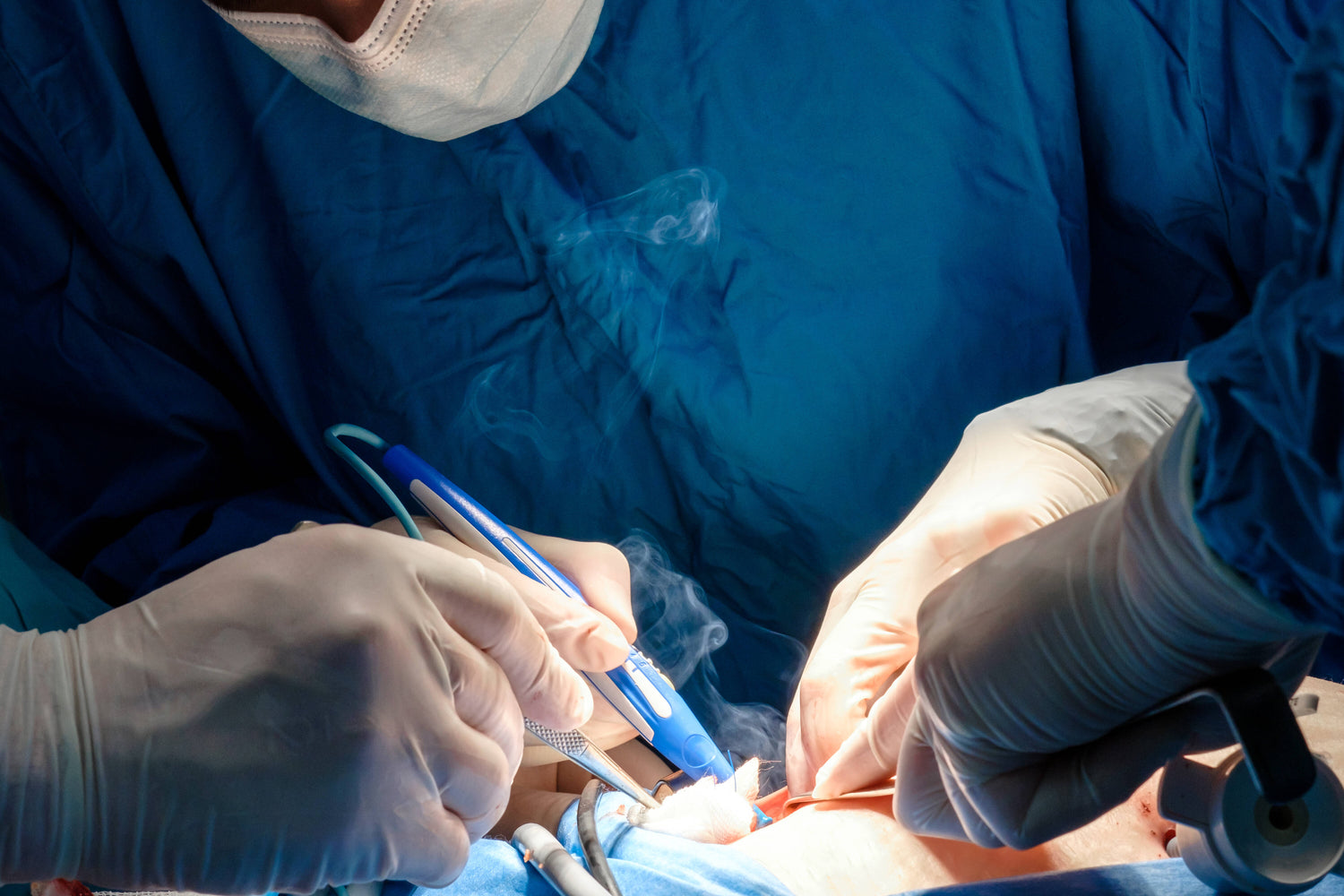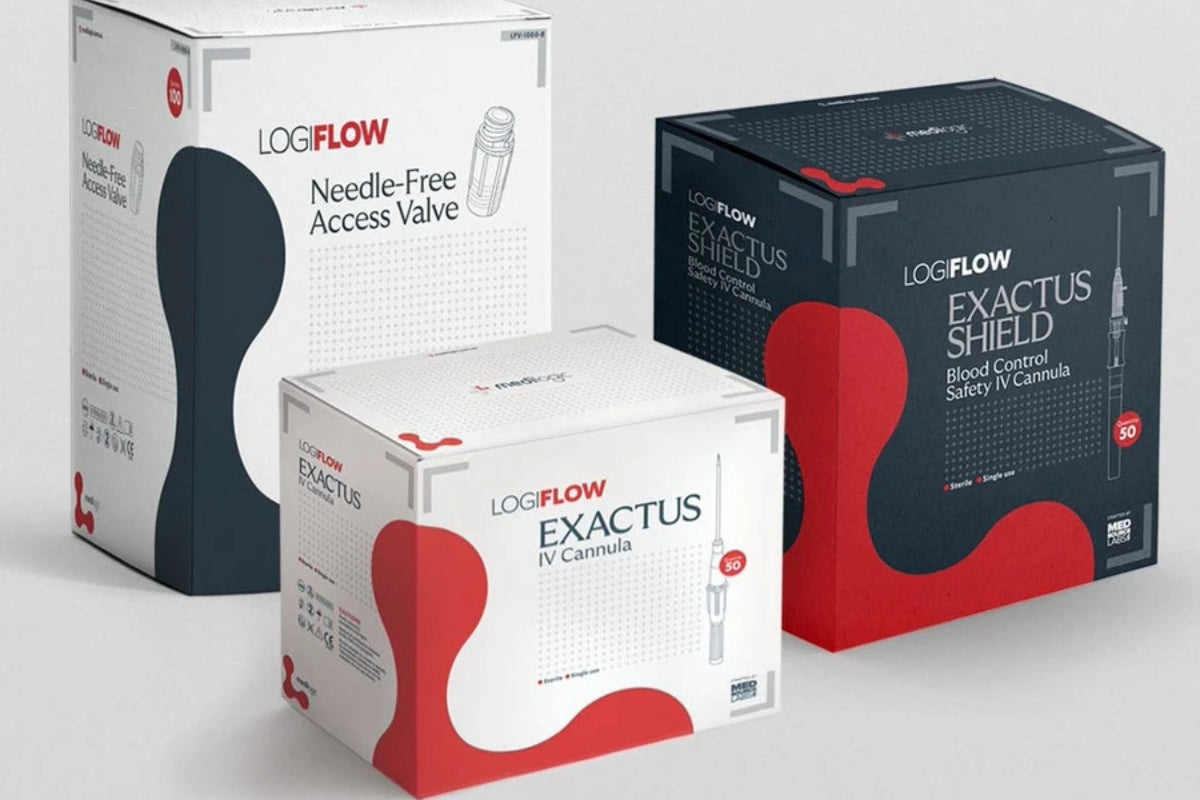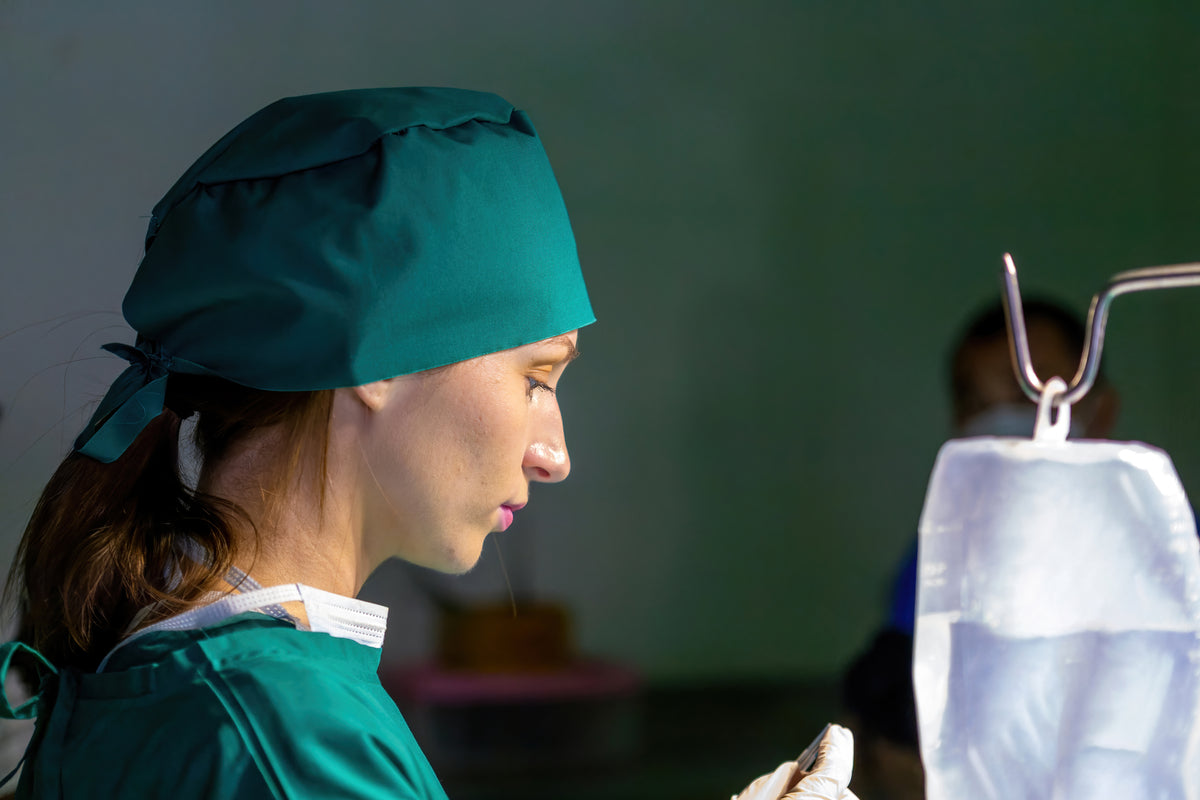What Is Surgical Plume?
A common presence in many operating rooms in Australia is surgical plume, often invisible but potentially hazardous if not managed properly. Surgical plume is a byproduct created during various surgical procedures that involve the use of heat-generating electrosurgical units. When tissue is dissected or cauterized, the cell membranes rupture at their boiling point, releasing vapours, proteins, and other organic matter, and causing thermal necrosis of adjacent cells, which releases hydrocarbons.[1]
This vaporized tissue releases plumes in the operating room, which contain a potentially harmful mixture of chemicals, cellular debris, and biological materials. Depending on the operation and the type of surgical instrument being used, the composition of surgical plume can vary, but it can include chemicals, blood and tissue particles, bacteria, and potentially even HPV and HIV viruses.[2]
The Risks Of Surgical Plume
Surgical plumes pose a significant biochemical hazard to medical professionals due to long-term exposure. Skin cancer specialists and dermatologists in particular carry out surgical procedures such as electrocautery and laser which generates surgical plumes.
Inhalation of surgical plume can lead to various short-term symptoms, such as eye irritation, headaches, nausea, and respiratory issues. Electrosurgical and laser plumes have been found to contain carcinogens such as benzene and formaldehyde and emit noxious odours due to toxic gases like hydrogen cyanide.
Prolonged exposure may increase the risk of more severe health problems, including chronic respiratory conditions and even potential carcinogenic effects.
It is crucial to implement effective smoke evacuation and room filtration systems during surgeries to minimize exposure and protect the health and safety of everyone in the operating room. Room filtration systems primarily capture liquids rather than particles or gases, requiring proper filtration. The use of personal protective equipment, such as masks and face shields, is also recommended to reduce the risk of inhaling harmful particles.
What Are Smoke Evacuators?
Generally speaking, the use of smoke evacuators is more effective than room suction systems in managing surgical plume. Using a smoke evacuator during procedures significantly reduces the risk of surgical plume inhalation.[3]
Smoke evacuators are specifically designed to capture and filter surgical plume generated during procedures that involve the use of heat-generating instruments. These devices aid in reducing the risk of exposure to harmful chemicals and maintain a clear field of vision for surgeons by removing plume from the surgical site.
In Australia, a smoke evacuator should have the following operational requirements[4]:
• A replaceable filtration system
• An exhaust system
• Compliance with minimum safety standards
• Versatility to handle anticipated levels of plume for all procedures undertaken
• Ensure the safe and easy change of filters
Most smoke evacuators are portable tabletop models or freestanding floor models and are manually activated, running continuously during the procedure. For example, the ViroVac Surgical Smoke Evacuator is designed to fit discreetly on a shelf or counter but is still robust to handle to a variety of procedures. Its versatile 3-port filter design can accommodate a variety of different sized tubing.
It is recommended that the suction tubing of the smoke evacuator be positioned less than an inch away from the surgical site to capture any plume that is being generated.
The surgical team monitors the operation of the smoke evacuator by keeping track of the filter and changing it in the unit if needed.
Some smoke evacuators, like the Bovie Smoke Shark III Evacuator, can be activated automatically by integrating a smart activator with the surgical pen being used during the procedure, thereby saving filter life.
The Effectiveness Of Smoke Evacuators In Surgery
Electrosurgery is highly effective method for cutting, coagulating or desiccating biological tissue. It does however have its own inherent risks, not only to the patient but to the medical professionals performing the surgery.
Skin cancer specialists and dermatologists are generally most at risk of being exposed to harmful surgical plume due to the nature and regularity of the procedures they perform. In addition, their support staff including perioperative nurses are subject to frequent exposure during operations.
Using Smoke Evacuators During Skin Cancer Surgery
In certain skin cancer treatments, the use of a smoke evacuator is crucial to the safety of healthcare professionals and the patient. The smoke evacuator continuously removes plume generated from tissue vaporization during procedures.
In skin cancer treatment, it is essential to have the smoke evacuator, as the laser or electrosurgical unit removes skin lesions, including skin cancers like basal cell carcinoma or melanoma.
Using Smoke Evacuators During Dermatology Procedures
In dermatology, where treatments often involve ablating potentially infectious tissue, a smoke evacuator reduces the risk of transmitting infections, such as HPV, to healthcare workers.[5]
Smoke evacuators filter captured plume through a multi-stage system, trapping fine particles and chemicals.
The effective capturing and filtering of hazardous surgical plume by smoke evacuators not only reduces the immediate symptoms of exposure, such as eye irritation and respiratory issues, but also mitigates the long-term health risks, including chronic respiratory conditions and potential carcinogenesis.
The effectiveness of smoke evacuators is so significant that there have been calls to make their use standard practice in operating rooms to ensure both patients and staff are protected during every procedure.[6]
Explore our range of smoke evacuators and protect your team from the hazards of surgical plume.
References
[1] Searle T, Ali FR, Al-Niaimi F. Surgical plume in dermatology: an insidious and often overlooked hazard. Clin Exp Dermatol. 2020 Oct;45(7):841-847. doi: 10.1111/ced.14350. Epub 2020 Aug 11. PMID: 32780880; PMCID: PMC7436401.
[2] Carrick, Andrea J. (2023) "Surgical plume and its associated hazards to perioperative staff: A review of current standards for practice and risk management," Journal of Perioperative Nursing: Vol. 36 : Iss. 2 , Article 2.
[3] Control of Smoke From Laser/Electric Surgical Procedures. 1996 DHHS (NIOSH) Publication Number 96-128
[4] NSW Health Guideline GL2023_018 - Work Health and Safety - Controlling Exposure to Surgical Plume
[5] Katoch S, Mysore V. Surgical Smoke in Dermatology: Its Hazards and Management. J Cutan Aesthet Surg. 2019 Jan-Mar;12(1):1-7. doi: 10.4103/JCAS.JCAS_177_18. PMID: 31057262; PMCID: PMC6484569.
[6] Rodger D. The case for compulsory surgical smoke evacuation systems in the operating theatre. Clinical Ethics. 2022;17(2):130-135. doi:10.1177/14777509211063589



